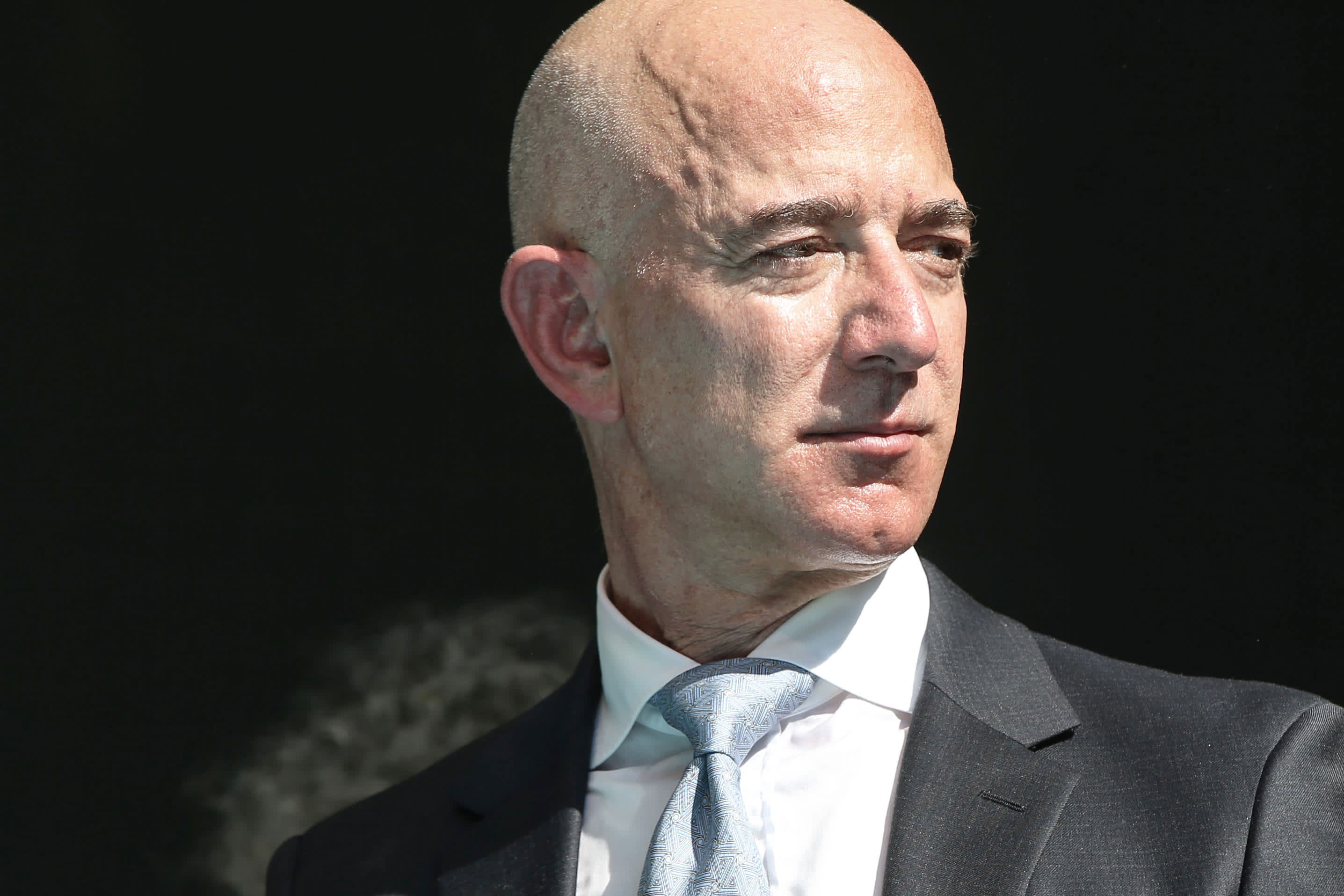Amazon reported its first-quarter earnings after the bell on Thursday, revealing the pandemic’s impact on the business that has been a rare bright spot on the stock market. The stock fell about 5% after hours after missing estimates on earnings while beating revenue expectations.
Here’s what Amazon reported:
- Earnings per share (EPS): $5.01
- Revenue: $75.45 billion
- Amazon Web Services (AWS) revenue: $10.22 billion
Beyond the results, the biggest news in Amazon’s report was that it plans to spend all of its profit from the second quarter — an estimated $4 billion — on responding to the coronavirus pandemic. That includes hundreds of millions of dollars it plans to spend on Covid-19 tests for its workers and beefing up its delivery network to get packages to customers on time.
“If you’re a shareowner in Amazon, you may want to take a seat, because we’re not thinking small,” Amazon said in the press release. “Under normal circumstances, in this coming Q2, we’d expect to make some $4 billion or more in operating profit. But these aren’t normal circumstances.”
Wall Street had been anticipating earnings per share of $6.25 on revenue of $73.61 billion, based on Refinitiv consensus estimates. Amazon Web Services revenue was expected to come in at $10.33 billion, based on FactSet estimates. However, it’s difficult to compare reported earnings to analyst estimates for Amazon’s first quarter, as the coronavirus pandemic continues to hit global economies and makes earnings impact difficult to assess.
Amazon CFO Brian Olsavsky told CNBC’s Deirdre Bosa he expects the company will spend $1 billion on Covid-19 testing in the full year 2020. Amazon has designated a team of researchers, engineers, procurement specialists and program managers to work on building incremental testing capacity. Amazon said the team is building a lab and has already begun a pilot test of front-line employees.
“We’re not sure how far we will get in the relevant timeframe, but we think it’s worth trying, and we stand ready to share anything we learn,” Amazon said in the release about its testing plans.
Some of the $4 billion will also fund higher wages for workers, personal protective equipment (PPE), better cleaning protocols at facilities and “less efficient process paths” that will allow for social distancing.
This marked the first quarter AWS revenue topped $10 billion. More organizations have relied on cloud services like Amazon’s during stay at home orders to cope with the pandemic. AWS helped the NFL stream its virtual draft last week, for example.
For the second quarter, Amazon said it expects net sales to come in between $75 billion and $81 billion, representing year-over-year growth between 18% and 28%. The company anticipates a range of an operating loss of $1.5 billion to an operating income of $1.5 billion based on its expectation of spending $4 billion on coronavirus-related costs. That compares to its operating income of $3.1 billion during the same quarter last year.
Olsavsky told CNBC that Amazon saw a big spike in grocery sales. Physical store sales were up 8% year-over-year in the first quarter, which Olsavsky said was mostly in March after previously seeing growth around 1% per quarter.
Much of Amazon’s earnings release centered on its response to the coronavirus pandemic. Amazon addressed how it is helping employees stay safe with measures like procuring 100 million face masks and increased pay for hourly employees. The company has faced significant push-back from warehouse employees who have complained of unsafe conditions and inadequate benefits as their jobs have been deemed essential. It has now hired all 175,000 additional workers it had opened positions for in March and April.
Amazon also talked about how it is servicing customers during the pandemic by prioritizing stocking essential goods like household staples and medical supplies. Amazon said it’s suspended more than 10,000 sellers from its platform for violating policies against price gouging. It’s also working to expand capacity for food-related delivery and pick-up services like Amazon Fresh and Whole Foods.
Amazon also highlighted organizations using AWS to run their own coronavirus responses and info-gathering, including the World Health Organization and schools around the world.
This story is developing. Check back for updates.
-CNBC’s Deirdre Bosa contributed to this report.
Correction: This story’s headline has been updated with the correct quote from Amazon’s press release about its plan to spend its Q2 profits on the coronavirus response.
WATCH: What it’s like inside an Amazon warehouse during the Covid-19 pandemic
